The fourth day of my Ghanaian vacation would take me on a sombre exploration of Ghana’s tumultuous past.
My breakfast meal this morning was a quick bowl of oatmeal at the Noda Hotel’s restaurant. Moments later, my tour guide arrived and our journey to the Cape Coast’s slave castles and forts was underway.
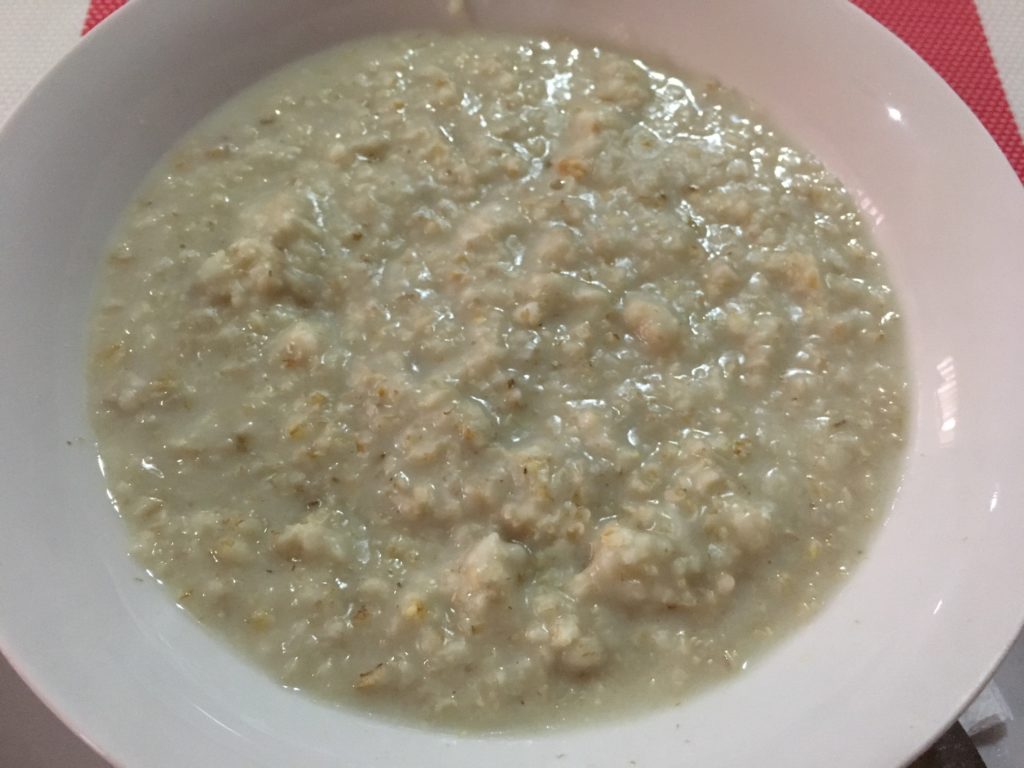
On our way to Cape Coast Castle, we drove through several poor villages. 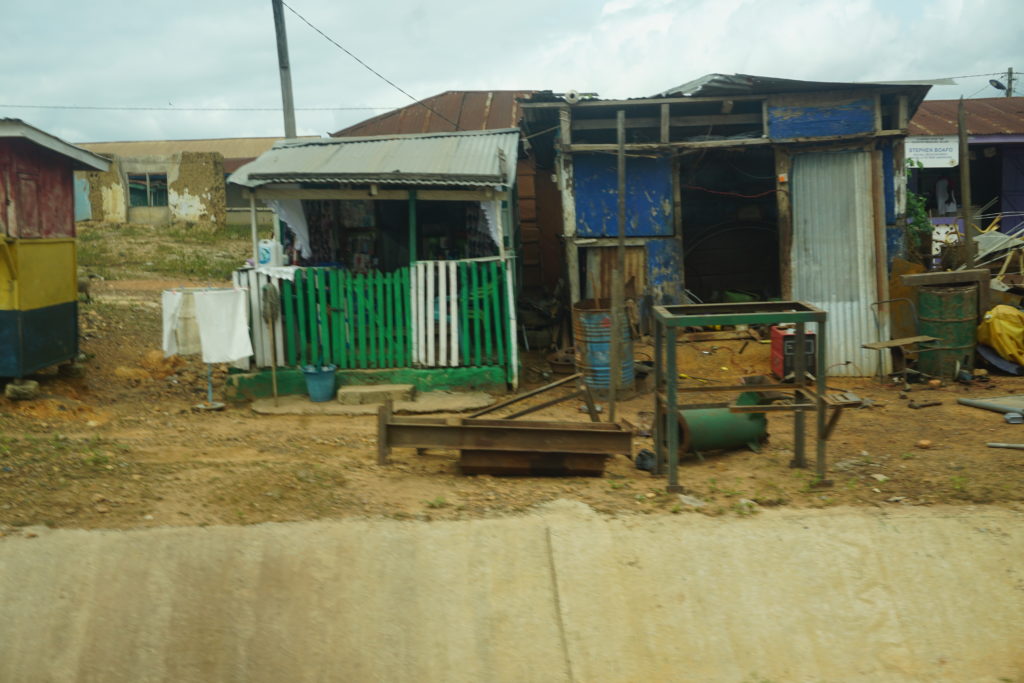
The stark contrast of these small shack houses with the local middle class homes would soon become obvious.

Many churches are found along a typical day’s drive. This particular day, a beautiful newer church caught my eye.

Locals congregate by the vendors selling their fruits and other goods by the roadside. Village markets are typically housed in small wooden shacks.


Middle class homes and wealthy residences are also located in this coastal scenic region.


We arrived at Cape Coast Castle during the late morning hours. The castle and fort is one of dozens of slave castles in Ghana, built in 1653 by the Swedes for Ghana’s prosperous timber and gold trade. As human labor was becoming increasingly in demand in the Americas, the castle later became part of the Trans-Atlantic slave trade. The Dutch occupied the fort by 1660. British troops eventually captured it in 1665 and by 1700 had expanded the property into an larger castle.

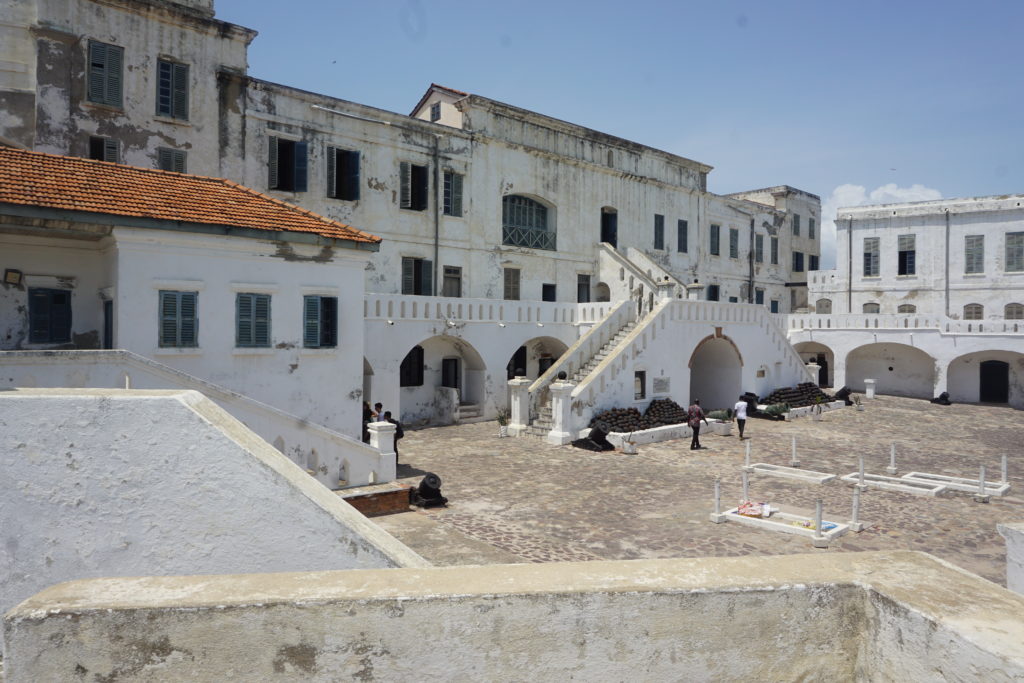
Multiple cannons, lined up one after another, protected the castle’s ocean-facing exterior.


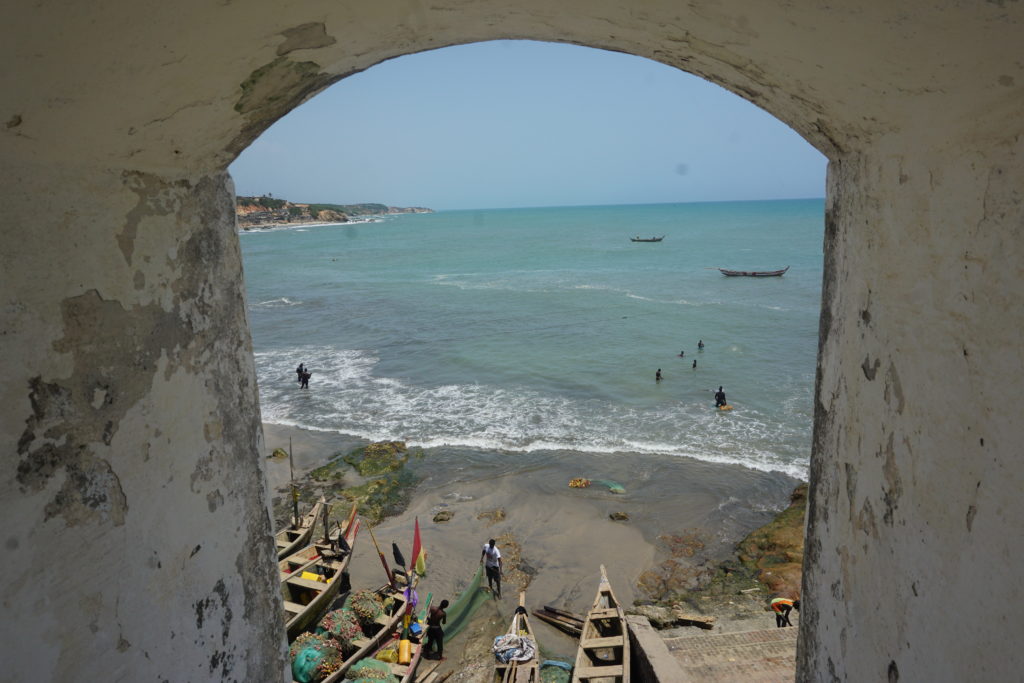
Guided tours of the castle and grounds are provided for a fee. Once inside the castle, we entered several “slave dungeons” or “prison cells”. Approximately, 1500 prisoners from Cape Coast Castle were sold in the slave trade. The British outlawed the Trans-Atlantic slave trade in 1807.

The dungeons provided no ventilation and only one or two tiny windows for daytime light. These cells were separated by gender. Floors were covered with human waste, as only a small bucket was provided for the entire dungeon room.
A couple hundred slaves were crammed into the small space. These days, the dungeons display symbolic faux “heads” in close proximity to emphasize how tight the quarters had been.

We were told that some of the officers would rape the women. There was a separate room for this purpose, outside of the women’s dungeons.

Troublesome(revolting) prisoners were contained in smaller dungeon rooms with no light.
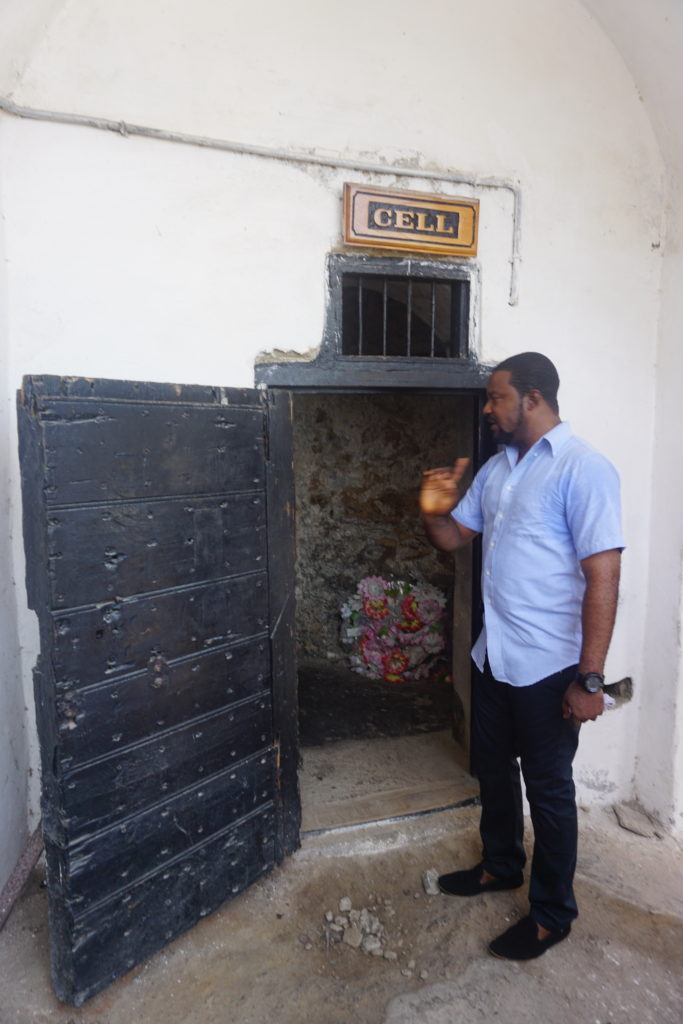
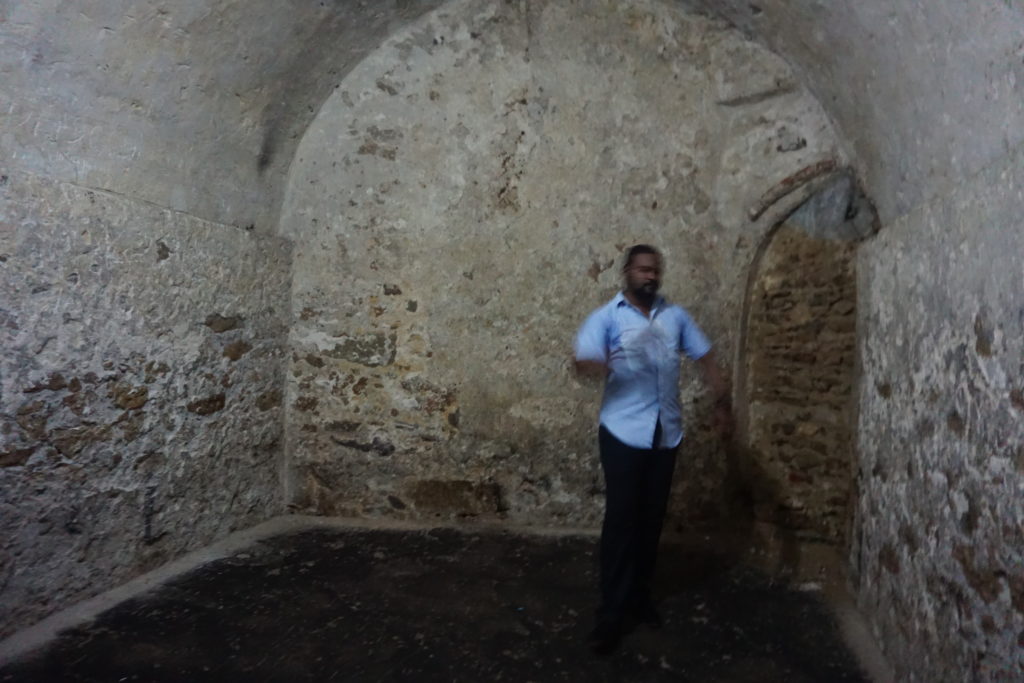
A number of circular marks from the slave shackles were embedded on the dungeon floor…a sobering reminder of this horrific and brutal past.

Our tour group was then guided through the underground tunnel to the “Door Of No Return”.


This large wooden door was the exit point where the slaves would board the “slave ships” heading to the New World.
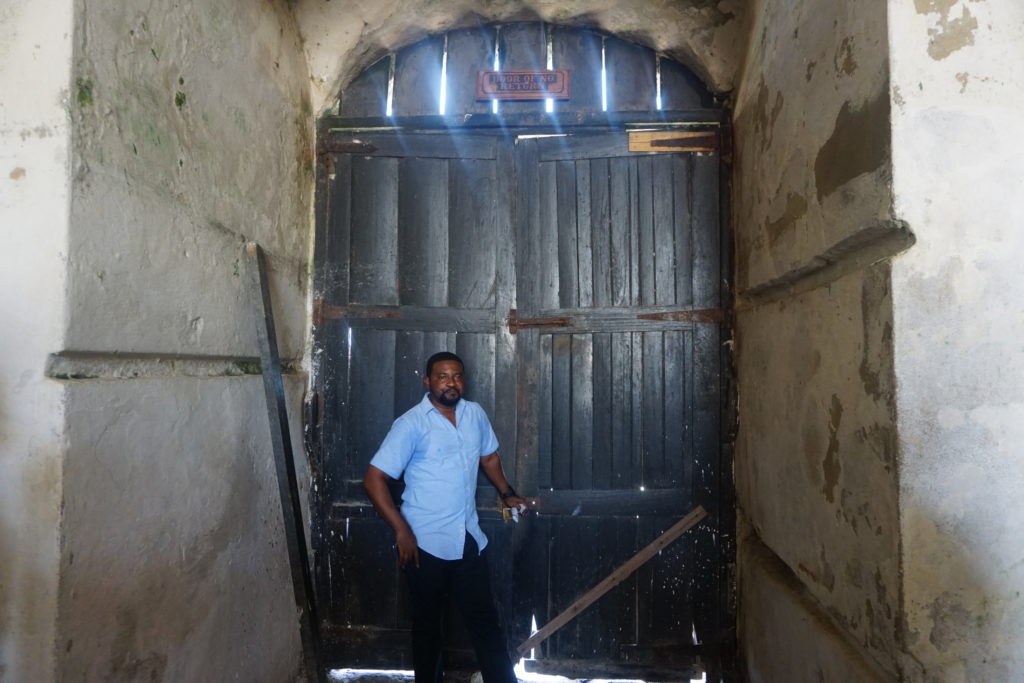

Upon completing this poignant tour, we headed to “Baobab Moringa Restaurant”(Baobab Vegetarian Moringa Restaurant) for lunch. An organization called the “Baobab Children’s Foundation” has initiated several projects to provide economic opportunity for the local community. Projects include Baobab School, Baobab Guest House, Baobab Cultural Troupe, and Baobab Organic Farm. The vegetarian/vegan-friendly restaurant provides organic fare. My wonderful meal consisted of a fried “Black Beauty”(aubergine) in a pastry crust, with a side of cooked veggies and yam chips. Food and beverage are reasonably priced. Outdoor dining presents a relaxing atmosphere.
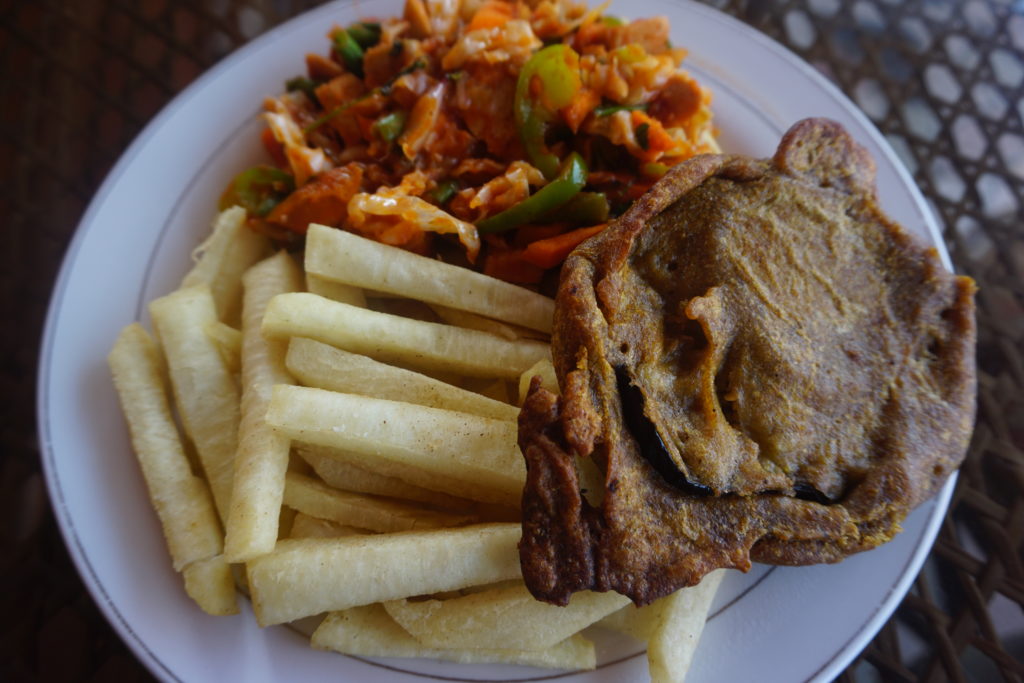
For dessert, I opted for a slice of their homemade chocolate cake and coconut cake. Cocoa is a major export for the country. I took a bite of each of the tasty treats and saved the remainder for the following day.
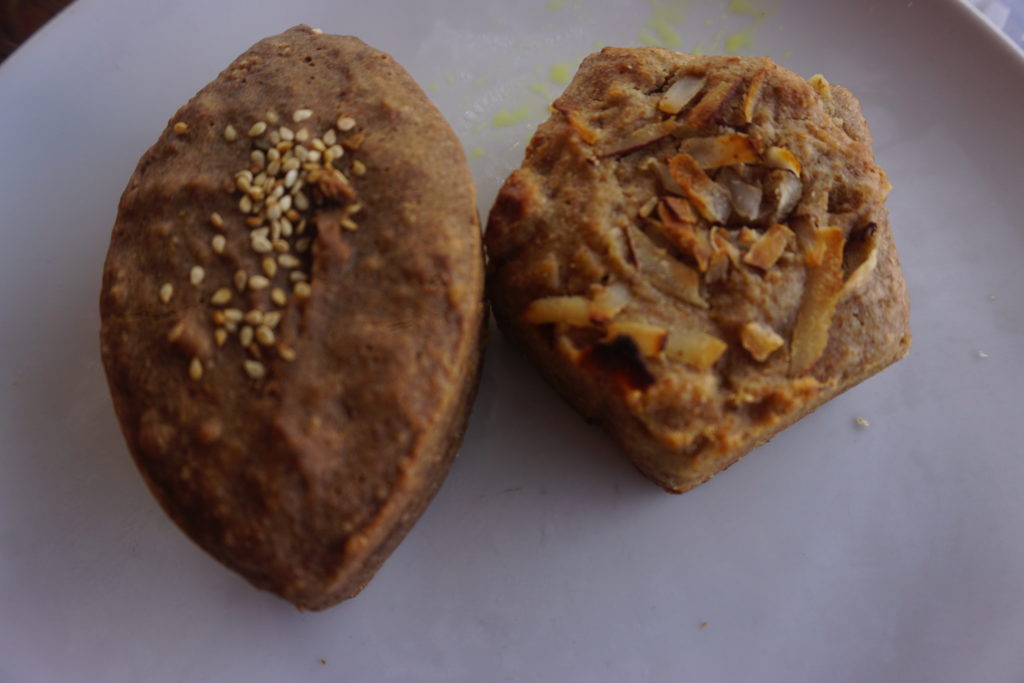
The restaurant is also renowned for its freshly made juices, using local fruit. I really enjoyed the flavorful pineapple-moringa juice.
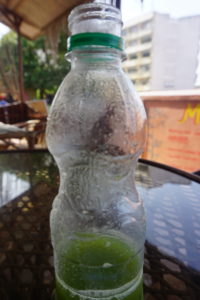
With my refreshing beverage in hand, we climbed back into the tour van and headed to Elmina Castle, located in nearby Elmina. This castle, along with Cape Coast Castle, are the largest slave castles in the region. We experienced a scenic drive along the coast, dotted with towering palm trees swaying in the breeze.

I entered Elimina Castle’s gate and awaited the castle’s guide to commence a group tour of the premises. The castle was built by the Portuguese in 1482. Initially established for the trade of goods, it later became a critical segment of the Atlantic slave trade. Dutch captured the fort in 1637 and utilized it in the slave trade until 1814. In 1872, The fort and the entire Dutch Gold Coast became occupied by the British Empire.

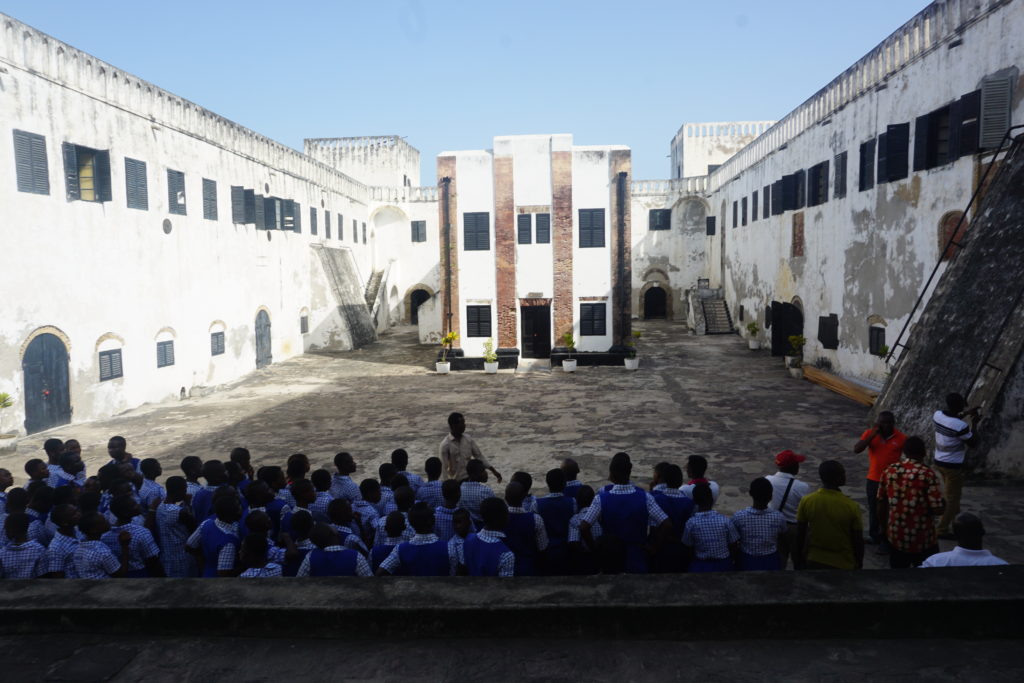
Similar to Cape Coast Castle, there were special dungeon cells with no light and no food for particularly disobedient slaves who tried to escape.

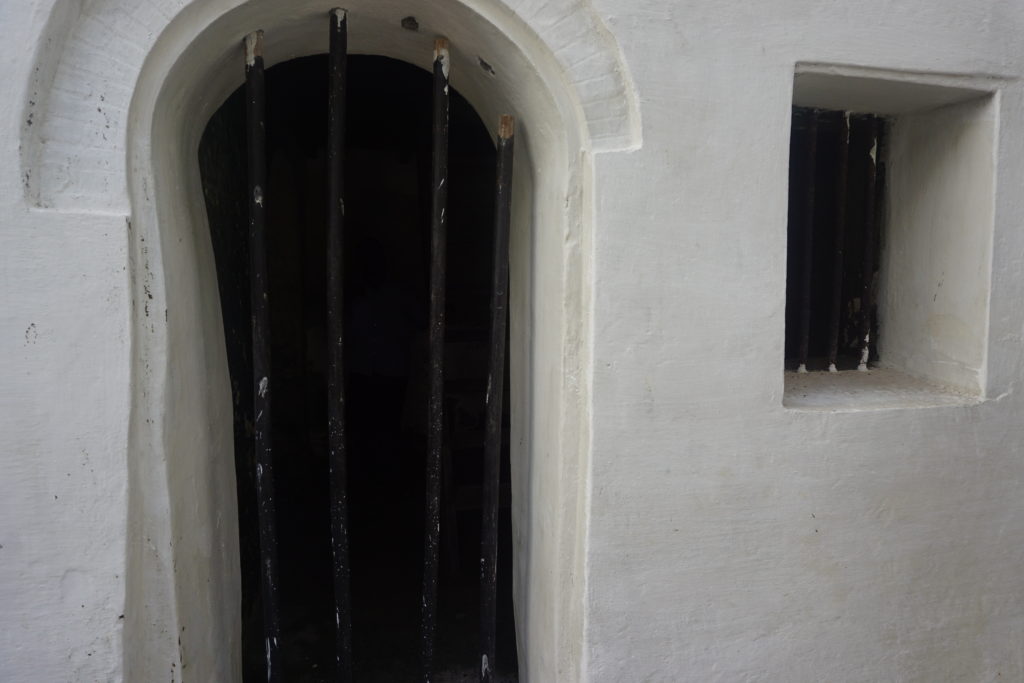
Also similar to Cape Coast Castle, one crammed cell would house a large number of slaves. Only one bucket per cell was provided for human excrement. The sanitation conditions were beyond unbearable.

We walked through several of these male and female dungeon cells. I followed my guide and group through the tunnel system to Elmina Castle’s “Door Of No Return”.
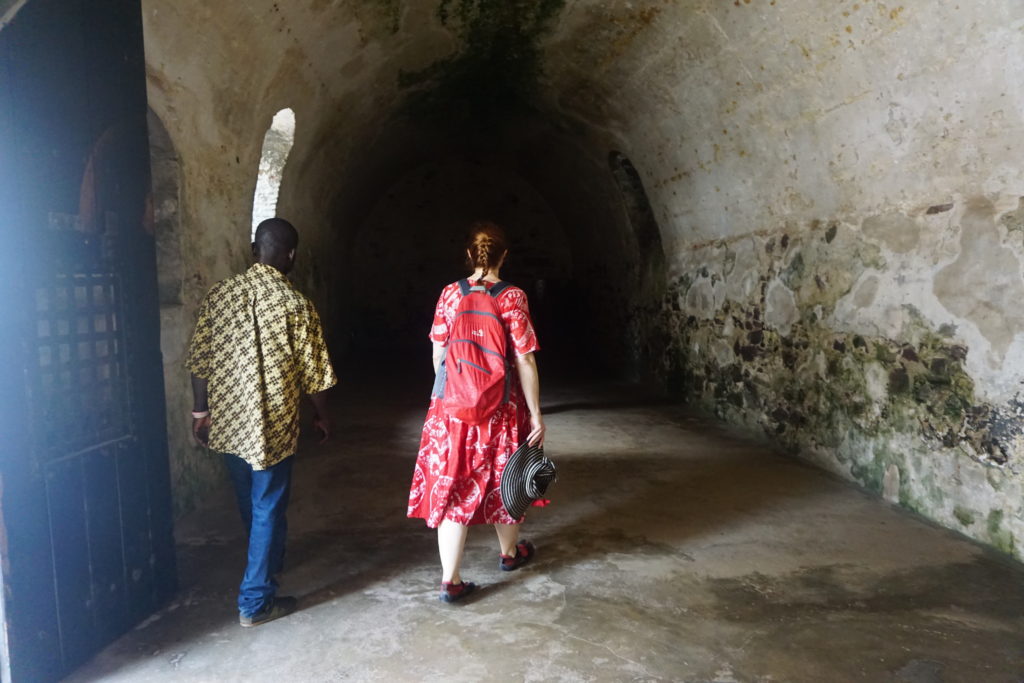
The exit door paved way to the shore, where slaves were loaded onto the slave trade ships, heading across the Atlantic Ocean.


As the guide closed the tour with a touching poem about the horrors of slavery, I became all “choked up”, in disgust that such atrocities actually happened and in shock regarding the extent of cruelty to which these slaves were treated.
My private guide picked me up after the local tour had completed. We arrived back in the city of Cape Coast for dinner. Prior to my meal, my guide had a special treat in store for me. He brought me across the road from the restaurant, in order to experience the sun setting on the gorgeous beach.

Shortly thereafter, we crossed the road and arrived at the vegetarian/vegan-friendly “New Life Cafe” (New Life Cafe) for dinner. The small “chop bar” shack is located on a main road by the ocean. I selected a plate of delicious Jollof Rice; a local Ghanaian dish made with peppers, garlic, onions, and vegetables.
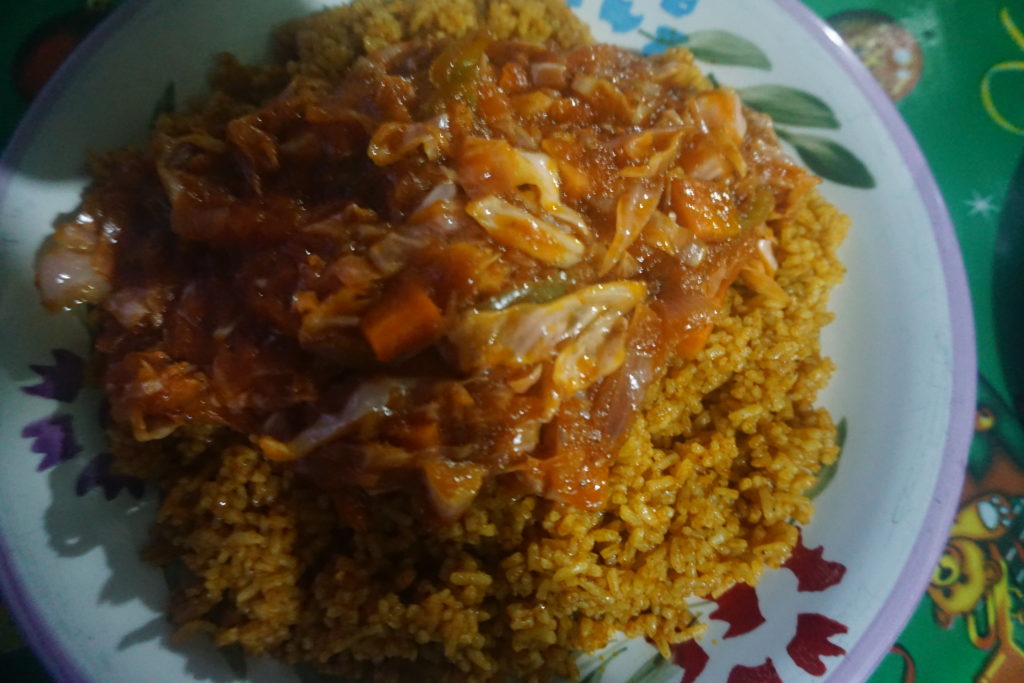
It had been an enlightening day. I appreciated my day tour of the slave castles and forts that represent Ghana’s turbulent past. I admired the picturesque views of the Cape Coast region and its amazing vegan food. My mind was racing with excitement, thinking about the rainforest canopy walk that the following day would bring.
